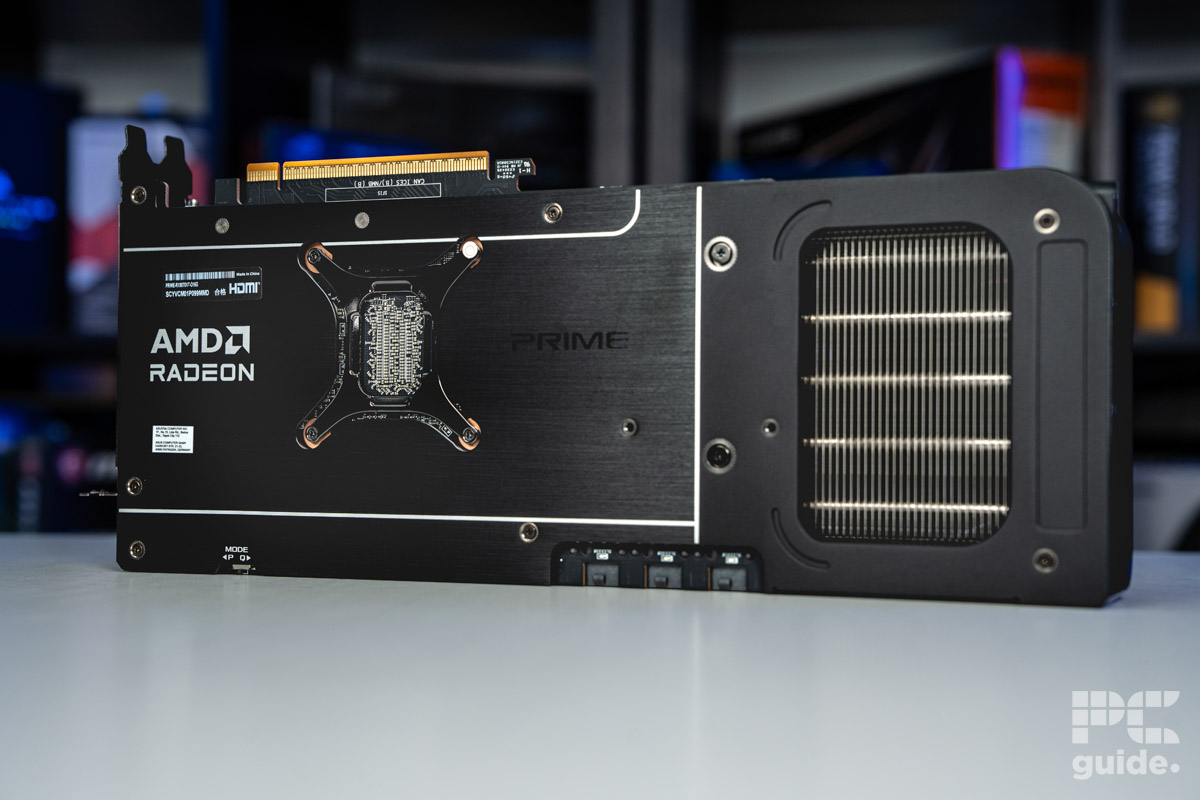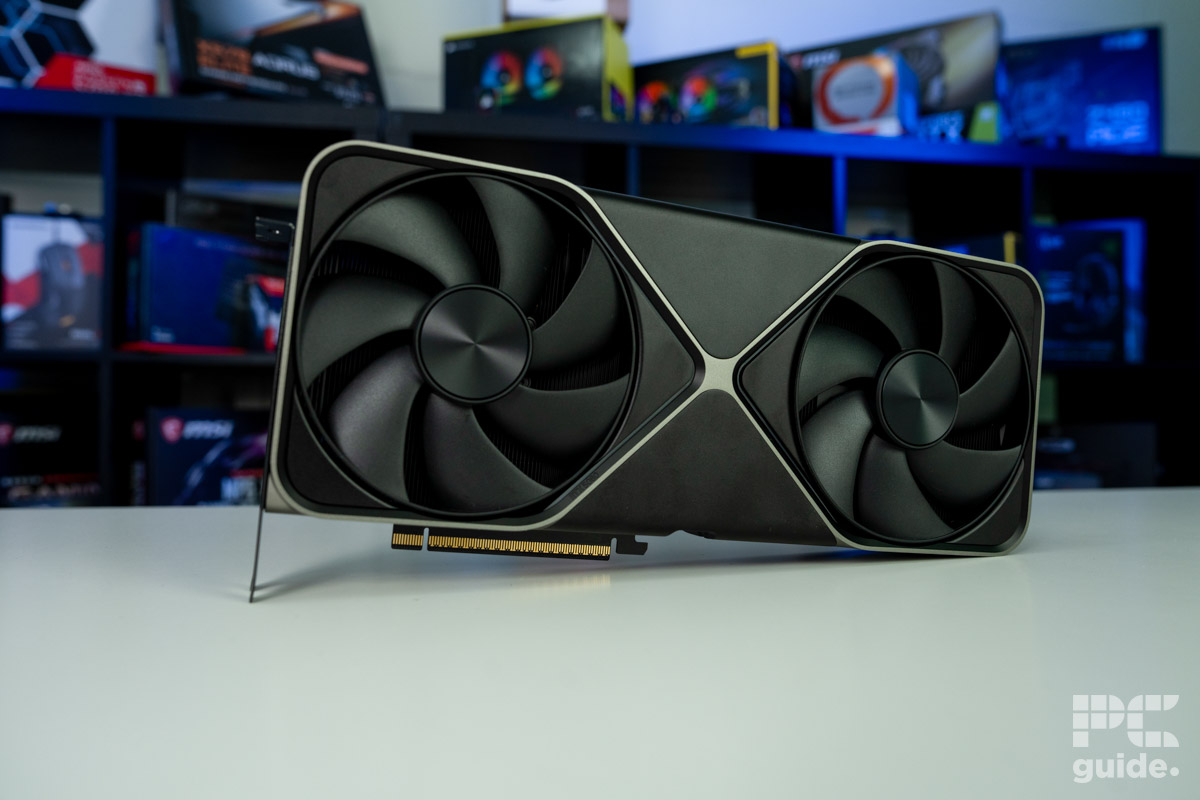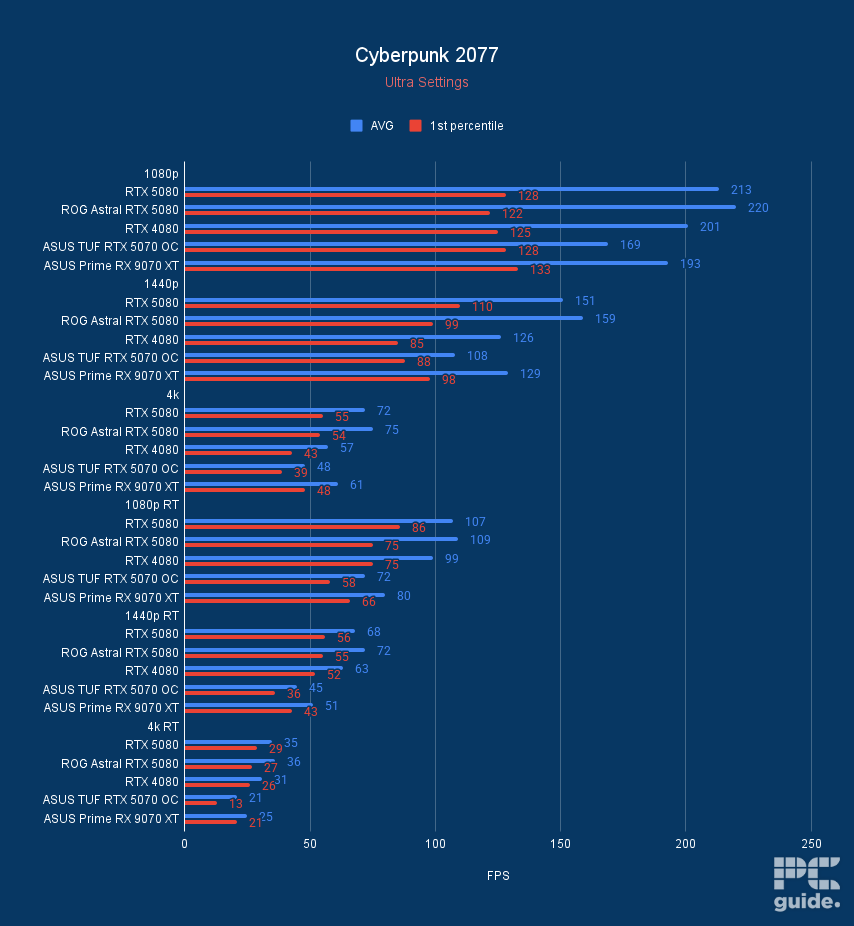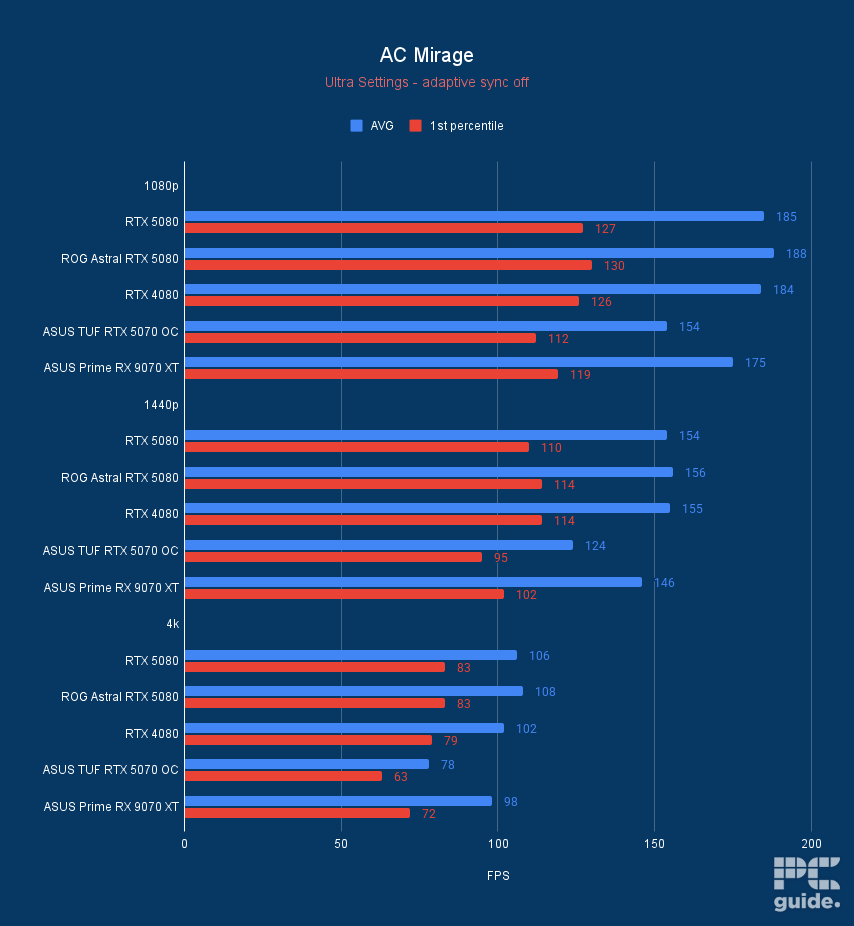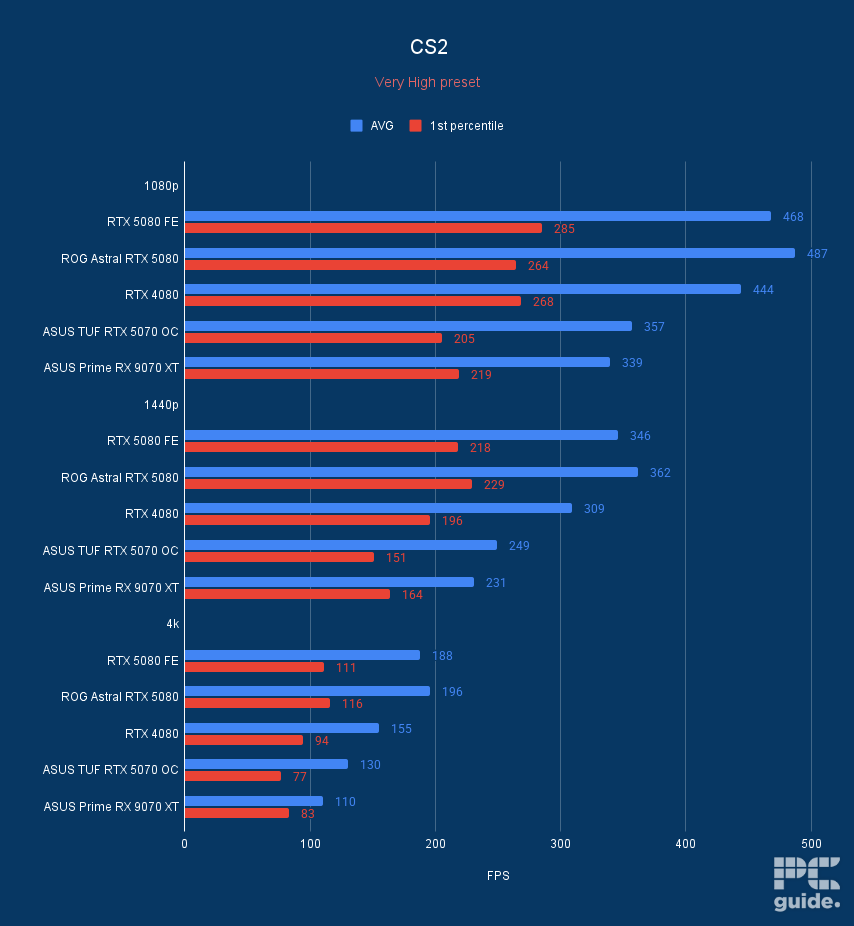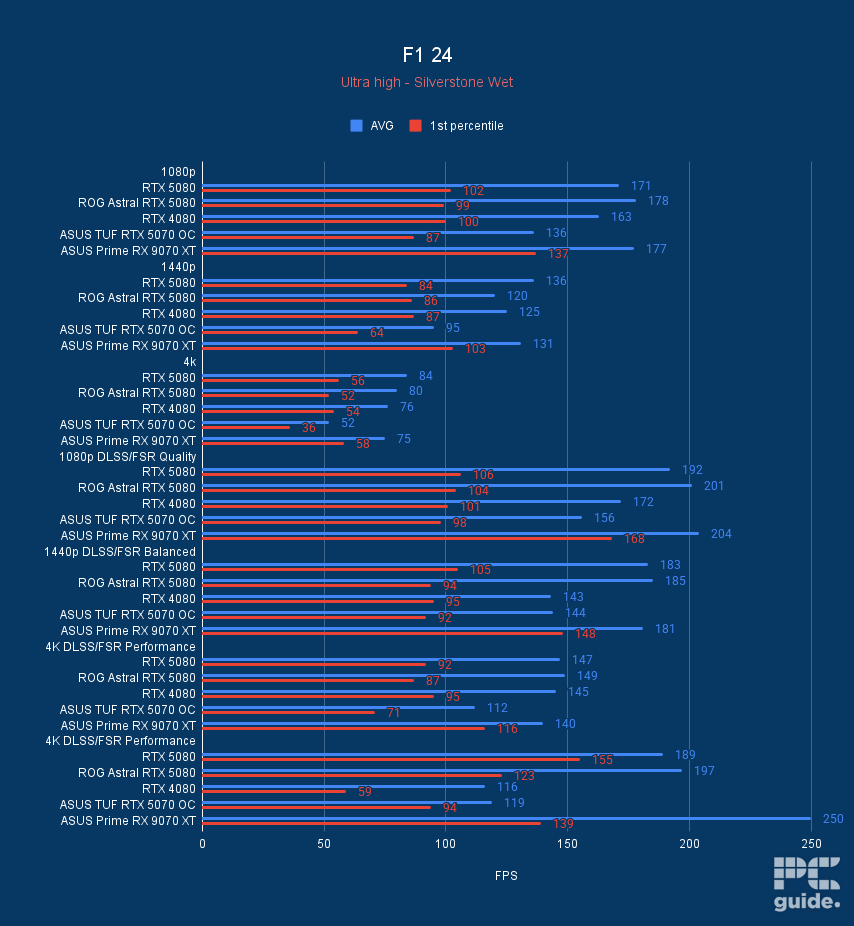RX 9070 XT vs RTX 5080 spec and performance comparison – how do they compare?
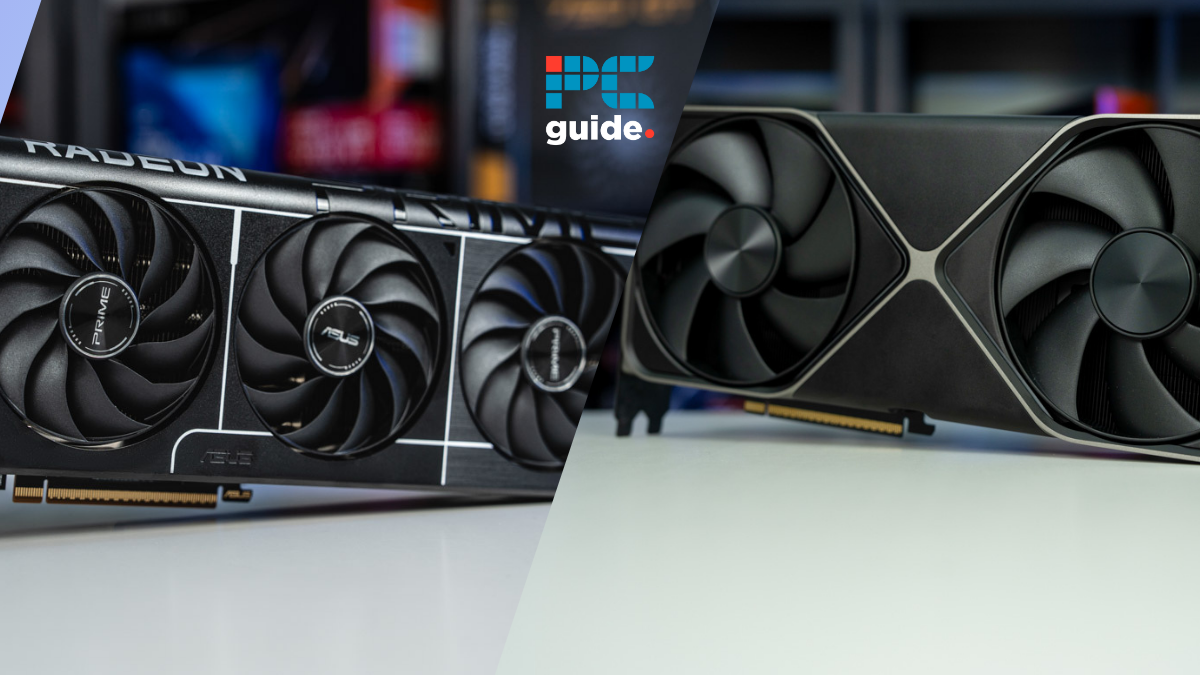
Table of Contents
The RX 9070 XT has met all expectations and delivered excellent performance. A testament to its success is that despite having plenty of stock at launch, it is out of stock, and AMD and manufacturers are working towards replenishing it as soon as possible. Between the RTX 5070 and the 5070 Ti, the RX 9070 XT has become the more popular choice, and when we tested it for our RX 9070 XT review, it easily outperformed the RTX 5070.
So, it has plenty of great hardware and software upgrades, but will that be enough to enable it to go against the RTX 5080? This is what we’re here to find out. As we’ve also reviewed the RTX 5080, we have the complete gaming and synthetic benchmarks for these graphics cards available, which we’ll use to draw a comparison. That being said, both of these GPUs are on different levels in their respective performance hierarchies, so it wouldn’t be surprising to see the RTX 5080 pull ahead, but let’s find out how they stack against each other.
Prime Day may have closed its doors, but that hasn't stopped great deals from landing on the web's biggest online retailer. Here are all the best last chance savings from this year's Prime event.
- Sapphire 11348-03-20G Pulse AMD Radeon™ RX 9070 XT Was $779 Now $719
- AMD Ryzen 7 7800X3D 8-Core, 16-Thread Desktop Processor Was $449 Now $341
- Skytech King 95 Gaming PC Desktop, Ryzen 7 9800X3D 4.7 GHz Was $2,899 Now $2,599
- LG 77-Inch Class OLED evo AI 4K C5 Series Smart TV Was $3,696 Now $2,996
- AOC Laptop Computer 16GB RAM 512GB SSD Was $360.99 Now $306.84
- Lexar 2TB NM1090 w/HeatSink SSD PCIe Gen5x4 NVMe M.2 Was $281.97 Now $214.98
- Apple Watch Series 10 GPS + Cellular 42mm case Smartwatch Was $499.99 Now $379.99
- AMD Ryzen 9 5950X 16-core, 32-thread unlocked desktop processor Was $3199.99 Now $279.99
- Garmin vívoactive 5, Health and Fitness GPS Smartwatch Was $299.99 Now $190
*Prices and savings subject to change. Click through to get the current prices.
RX 9070 XT vs. RTX 5080 specs comparison
Here’s a quick look at how these two cards stack up side-by-side.
| Specifications | RX 9070 XT | RTX 5080 |
| Compute units/CUDA cores | 64 | 10752 |
| RT Accelerators | 64 | 84 |
| AI Accelerators | 128 | 336 |
| Peak AI TOPS | 1557 | 1801 |
| Boost clock speed | 2.97 GHz | 2.62 GHZ |
| Memory | 16GB GDDR6 | 16GB GDDR7 |
| TDP | 304W | 360W |
| Connectivity | PCIe 5.0 x16 | PCIe 5.0 x16 |
| Display | DisplayPort 2.1a, HDMI 2.1b | DisplayPort 2.1b, HDMI 2.1n |
Performance Comparison
There is a stark difference between the hardware of these graphics cards, and it seems like a very tough battle for the RX 9070 XT. However, we'll compare the major differences to see how they impact the performance and which GPU emerges the victor.
RX 9070 XT vs. RTX 5080 4K performance
To compare the gaming performance of these graphics cards at 4K, we’ll take the performance they showcased during Cyberpunk 2077, Assassin’s Creed: Mirage, CS2, and F1 24.
In Cyberpunk 2077, we got 61 FPS with the RX 9070 XT, while the RTX 5080 delivered 72 FPS, which is a 16% performance difference. However, in Assassin’s Creed: Mirage, the RX 9070 XT managed to reduce the performance gap to 7.8% as it delivered 98 FPS while the 5080 churned out 106 FPS.
In CS2, the RX 9070 XT delivered 110 FPS, but the RTX 5080 managed to outperform it easily by churning out 188 FPS (52% performance difference). F1 24 is a racing simulator with a very high graphical fidelity and an excellent physics engine. In this title, the RX 9070 XT and RTX 5080 delivered 75 and 84 FPS, respectively, giving the 5080 11% better output.
Overall, the RX 9070 XT did well in closing the gap in some titles. The RTX 5080 could easily stay ahead of it in 4K gaming, which isn’t surprising as it is a high-end GPU, but the performance of the 9070 XT is incredible in its own right.
RX 9070 XT vs. RTX 5080 1440p performance
At 2K, it should be easier for the RX 9070 XT to render more frames; however, the same can be said for the RTX 5080, so let’s see how this showdown goes.
In Cyberpunk 2077, the RX 9070 XT and 5080 managed 129 and 151 FPS, respectively, which means that the RTX 5080 stayed ahead with a 15% lead, which is only 1% less than what we saw at 4K. In AC: Mirage, we saw the same situation happening as the RX 9070 XT managed to bridge the gap even more and delivered 146 FPS, while the 5080 managed 154 FPS (5% performance difference).
In Counter-Strike 2, the performance gap between these cards dropped to 39% as they managed 346 and 231 FPS, respectively, but still is overwhelmingly in favor of the RTX 5080. Lastly, in F1 24, the 9070 XT churned out 131 FPS, and the 5080 could only manage 5 more FPS, maxing out at 136 (only a 3.7% performance gap). So, the RX 9070 XT did well in trying to match the RTX 5080, but the latter could easily stay ahead of it in all titles.
RX 9070 XT vs. RTX 4080 synthetic and AI performance
To gauge the synthetic performance, we’ll use 3DMark and Geekbench AI. These tests have Fire Strike Ultra, Time Spy Extreme, Port Royal, and single precision, half-precision, and quantized, respectively.
In Fire Strike Ultra, which tests a GPU 4K rendering ability with DX11, the RX 9070 XT got 17,604 points, while the RTX 5080 got 21,568, meaning the latter is 20% better at handling 4K frames. In Time Spy Extreme, which does the same thing, but with DX12, we got 14,275 and 16,069 points, respectively, which is an 11% performance gap, and the 5080 still won.
Port Royal is used to gauge how well a graphics card will handle real-time ray tracing, and the 9070 XT managed 18,086 points while the 5080 delivered 22,113, easily outperforming the 9070 XT with 20% better output. That being said, AMD has come a long way in developing its ray tracing technology, and previously, the difference would’ve been much greater than 20%.
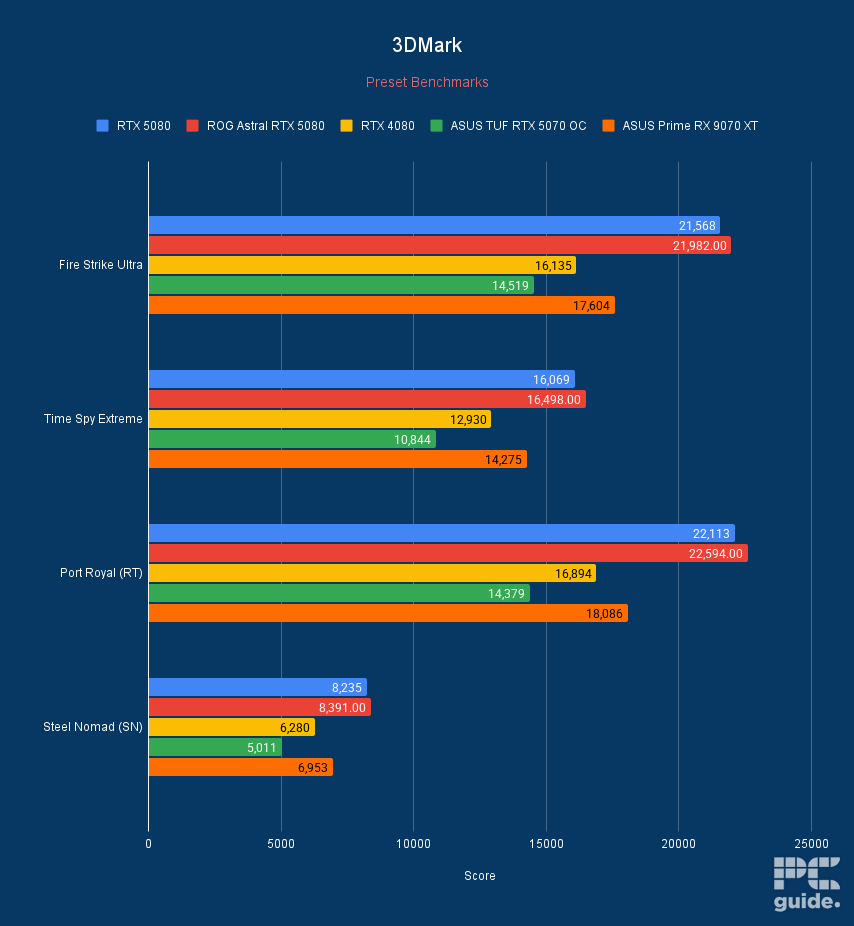
On the other hand, when it comes to AI performance, we saw the RX 9070 XT outperforming the RTX 5080 in the quantized test, which uses 8-bit integers to test the GPU. These graphics cards delivered 30,662 and 27,994 points, meaning they were 9% better than the 5080, which is a huge deal as the 5080 has more hardware on its side.
In half-precision, which uses 16-bit floating point integers, the 9070 XT got 48,671 points, while the 5080 delivered a dominating performance with 60,909 (22% performance difference). In the last test, single-precision, the performance gap between these GPUs was 2.8%, meaning it was neck and neck as the 9070 XT and 5080 churned out 35,496 and 36,534, respectively.
Overall, the RTX 5080 better synthetic and AI performance than the RX 9070 XT but the latter managed to grab some victories which says a lot.
Design differences
Power draw
The RX 9070 XT has a 304W TDP, while the RTX 5080 has a 360W TDP. This is a difference of 56W, and while it might seem a lot and probably won't warrant a PSU upgrade, what this means is that the 5070 Ti's cores require more power to operate.
While the core count of these GPUs can't be directly compared as they are based on different architectures, the RX 9070 XT is the more energy-efficient option, but with energy efficiency also usually comes lower performance, as we saw with the Ryzen 9000 processors like the Ryzen 9 9900X.
Memory type
The RTX 5080 and RX 9070 XT have 16GB VRAM; however, their memory type varies greatly. The 5080 features the latest GDDR7, which has a 32GB/s per pin speed, while the 9070 XT still has GDDR6 with a maximum of 16GB/s per pin speed.
In addition, both graphics cards have a 256-bit memory bus width, meaning that regardless of how much data is being communicated between the GPU, CPU, and RAM, the GPU's internal performance is limited to 256-bits of data per clock cycle.
So, given this orientation, the RTX 5080 has 960 GB/s bandwidth, while the RX 9070 XT should have around 644 GB/s. This means the RTX 5080 should perform better as it has GDDR7 VRAM, which is more energy efficient and can quickly transfer data.
Pricing
The RX 9070 XT is priced at $599, which makes it a more appealing option than the RTX 5070 Ti, which it is directly competing with. However, this also means that more people will want to get their hands on it, making the competition to get it on launch day all the more tough.
On the other hand, the RTX 5080 has a $999 MSRP, but it went out of stock quickly. The first wave of RTX 5080 and 5090 was set out as part of the Priority Access program by Nvidia. That being said, different AIBs are available on Amazon, but they are well over the MSRP, which isn’t justified for an RTX 5080.
Verdict
The outcome of this match-up isn’t surprising, as the RTX 5080 is in a league of its own and could even trade blows with the RTX 4090. On the other hand, the RX 9070 XT, in comparison, has humble specifications and is built as a true mid-range GPU but despite that, it managed to go toe-to-toe with the 5080 in some aspects, which is simply amazing and gives us an idea where AMD is headed in the future.

